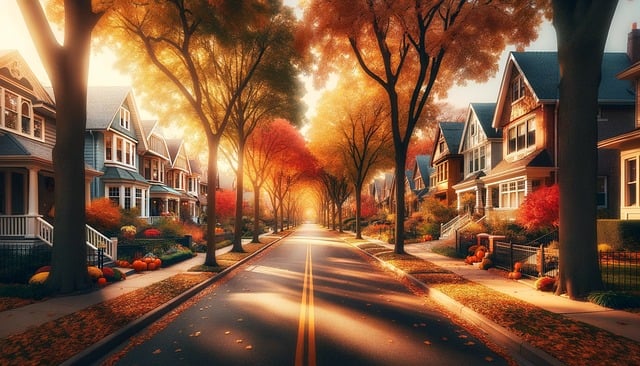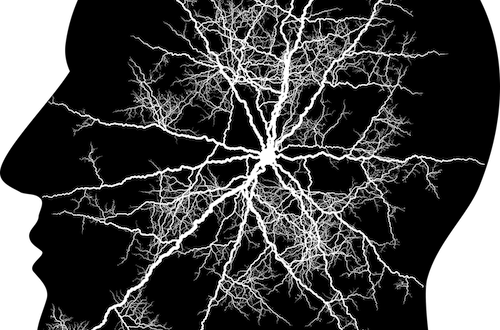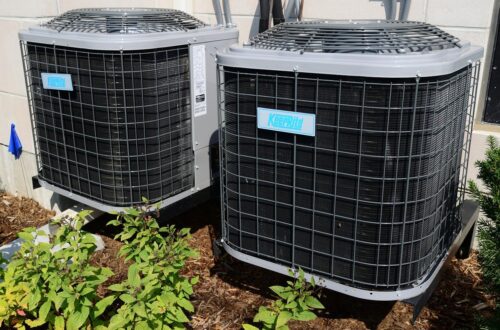Cities — packed with buildings and pavement — absorb heat all day and release it back into the air at night. This creates the urban heat island (UHI), whereby cities are hotter than surrounding areas. The effects of UHIs are far-reaching, impacting both the environment and human and pet health.
Urban trees within densely populated towns promote sustainable and livable spaces. These green giants offer many benefits that enhance the environment and quality of life for city dwellers.
Why Trees Are Important in Urban Areas
With up to 80% of the U.S. population residing in urban cities, trees are fundamental to mitigating the effects of UHIs. High temperatures in metropolitans promote the formation of ground-level ozone — a harmful pollutant that gives rise to smog. The combination of heat and sunlight further accelerates reactions between pollutants, diminishing air quality. Up to 5 million deaths from non-communicable diseases are caused by air pollution.
An elementary school in Phoenix, Arizona, has noticed a reduction of 4 pounds of air pollutants after just a year of planting trees. Trees absorb some atmospheric components that are harmful to human health, such as nitrogen oxides and carbon dioxide, while releasing oxygen. This process cleanses the air, which enhances public health by minimizing exposure to airborne contaminants.
Beyond air purification, urban green spaces help regulate a city’s climate. They provide shade and increase atmospheric humidity, cooling UHIs in densely populated areas. The shading effect can lower surface temperatures by about 54 degrees Fahrenheit (12 degrees Celsius), contributing to a more temperate urban environment during hot periods. Evapotranspiration, when plants lose excess moisture into the atmosphere, also plays a vital role in cooling down urban cities. Trees absorb heat to help vaporize and release water into the air, effectively lowering the temperature of surrounding spaces.
Soaring temperatures lead to greater use of air conditioning and cooling systems in buildings. This elevated demand for energy increases the strain on power grids, resulting in higher utility bills — particularly during heatwaves. Trees reduce the need for air conditioning. The result is lower energy costs and fewer energy-related emissions.
Urban forests also decrease the amount of heat absorbed by the ground. Trees have a higher albedo than dark asphalt and concrete, which soak heat. This term describes the quantity of solar radiation that is sent back into the atmosphere in urban settings. Trees planted in a cluster reflect about 15% of incoming sunlight into space instead of letting it reach the surface. This helps keep the ground cooler, reducing the overall heat from the city.
Urban cities consume 75% of the world’s energy, which inflates energy consumption, increasing greenhouse gas emissions — with most coming from fossil fuels. Using a gas-powered lawn mower for sixty minutes produces as much pollution as a car driving 45 miles per hour, with the U.S. using 800 million gallons of gas each year on landscaping equipment alone. As a result, many states are going as far as to ban gas-powered landscaping altogether in favor of more eco-friendly strategies.
Tips for Implementing and Caring for Urban Trees
Planting and nurturing trees in highly populated cities is a rewarding endeavor with tremendous mitigation potential against UHIs. However, it requires careful planning followed by consistent maintenance. Here’s how locals can contribute to implementing and caring for urban trees:
- Choose the right species: When picking trees for your garden or yard, consider the local climate, soil conditions, and space availability. Native species are best, as they are well-adapted to the local environment and require less maintenance. Factors like pest resistance can help narrow choices. Research and avoid invasive species that can outcompete native flora and disrupt local ecosystems.
- Plan for space vs. growth: Ensure there is ample space for trees to grow both above and below ground. These vegetation types need adequate room for their roots to spread and their canopies to expand. Avoid planting too close to buildings, power lines, or other infrastructure to reduce the risk of damage to property in the future.
- Plant correctly: Plant trees at the correct depth. The root flare — where the roots spread at the tree’s base — should be slightly above the ground’s surface. Placing seedlings too deep can suffocate the root while planting too shallowly can expose them to damage. Gently tamp down the soil after filling the hole to eliminate air pockets and water thoroughly to settle the soil.
- Water young trees: Growing plants need constant watering to establish robust root systems and to grow optimally.
- Maintain regularly: Apply mulch around the tree, extending to the drip line — the edge of the tree’s canopy. This helps retain moisture and regulate soil temperature. Practice routine pruning to maintain tree health and structure. Remove dead, diseased, and damaged branches to prevent the spread of diseases and pests.
- Safeguard from damage: Protect trees from physical damage often caused by lawn equipment, vehicles, or vandalism. Install fencing or tree guards, if necessary. Also, herbicides and pesticides should be used cautiously around these magnificent plants as chemicals harm their health.
Community involvement in tree planting and care initiatives is essential for educating residents about the benefits of trees in cities. Some people are investing in buying derelict land around metropolitan areas and using the space to plant trees to support urban greening efforts.
Urban trees are aesthetic elements that provide shade, enhance air quality, reduce energy consumption, and support biodiversity. Embracing and caring for improving quality of life.
Jack Shaw is the senior Outdoors writer for Modded, a men’s lifestyle publication. An avid outdoorsman and lover of nature, he’ll often find himself taking retreats out to explore his environment and encourages others to do the same in ways that are sustainable and beneficial to the environment.
Image by IA_for-you







One Comment
Pingback: